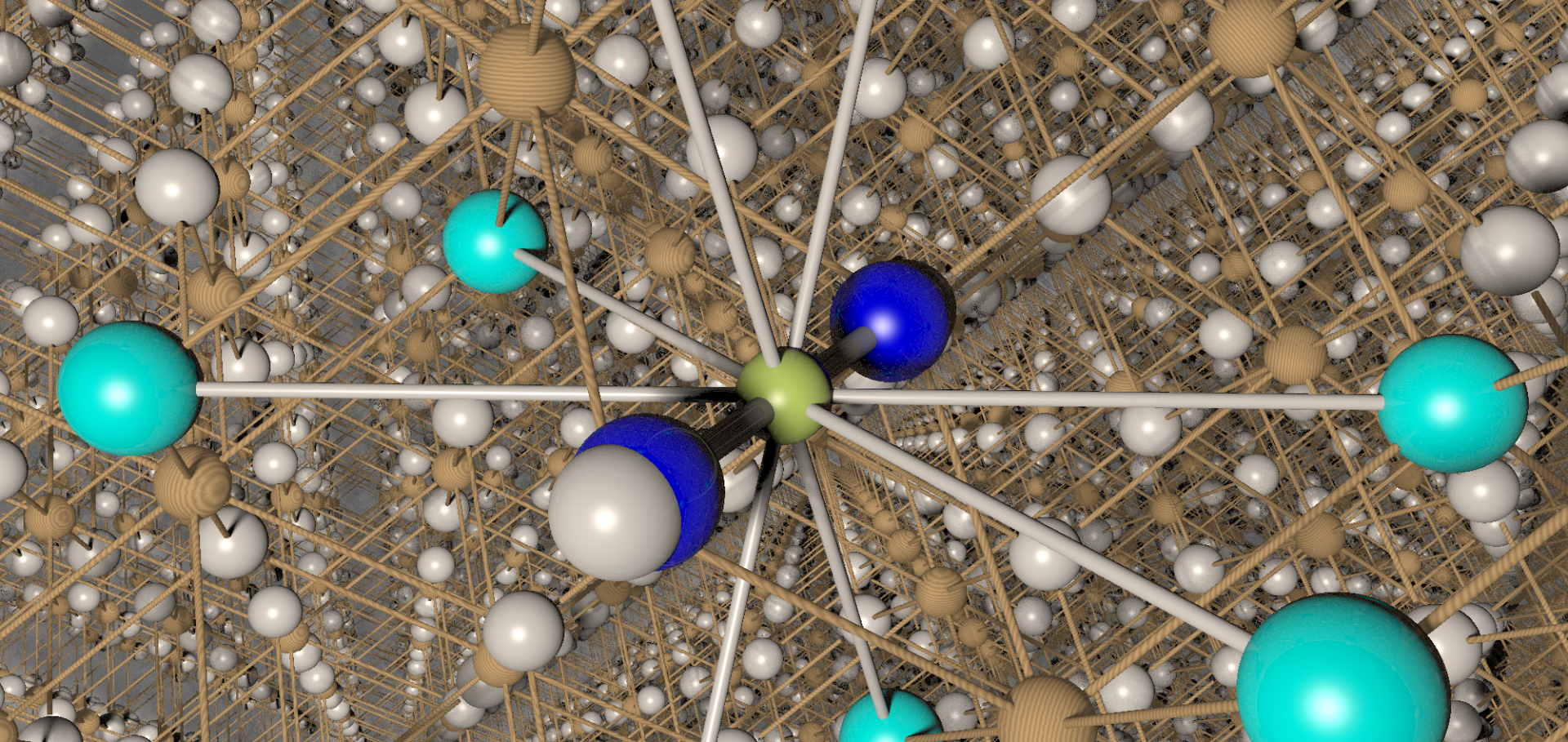Magnetic and non-magnetic phases of a quantum spin liquid.
Nature 471:7340 (2011) 612-616
Abstract:
A quantum spin-liquid phase is an intriguing possibility for a system of strongly interacting magnetic units in which the usual magnetically ordered ground state is avoided owing to strong quantum fluctuations. It was first predicted theoretically for a triangular-lattice model with antiferromagnetically coupled S = 1/2 spins. Recently, materials have become available showing persuasive experimental evidence for such a state. Although many studies show that the ideal triangular lattice of S = 1/2 Heisenberg spins actually orders magnetically into a three-sublattice, non-collinear 120° arrangement, quantum fluctuations significantly reduce the size of the ordered moment. This residual ordering can be completely suppressed when higher-order ring-exchange magnetic interactions are significant, as found in nearly metallic Mott insulators. The layered molecular system κ-(BEDT-TTF)(2)Cu(2)(CN)(3) is a Mott insulator with an almost isotropic, triangular magnetic lattice of spin-1/2 BEDT-TTF dimers that provides a prime example of a spin liquid formed in this way. Despite a high-temperature exchange coupling, J, of 250 K (ref. 6), no obvious signature of conventional magnetic ordering is seen down to 20 mK (refs 7, 8). Here we show, using muon spin rotation, that applying a small magnetic field to this system produces a quantum phase transition between the spin-liquid phase and an antiferromagnetic phase with a strongly suppressed moment. This can be described as Bose-Einstein condensation of spin excitations with an extremely small spin gap. At higher fields, a second transition is found that suggests a threshold for deconfinement of the spin excitations. Our studies reveal the low-temperature magnetic phase diagram and enable us to measure characteristic critical properties. We compare our results closely with current theoretical models, and this gives some further insight into the nature of the spin-liquid phase.Measurement of the internal magnetic field in the correlated iridates Ca4 IrO6 , Ca5 Ir3 O12 , Sr3 Ir2 O7 and Sr2 IrO4
Physical Review B - Condensed Matter and Materials Physics 83:9 (2011)
Abstract:
Oxides containing iridium ions display a range of magnetic and conducting properties that depend on the delicate balance between interactions and are controlled, at least in part, by the details of the crystal architecture. We have used muon spin rotation (μSR) to study the local field in four iridium oxides, Ca4IrO6, Ca5Ir3O 12, Sr3Ir2O7, and Sr 2IrO4, which show contrasting behavior. Our μSR data on Ca4IrO6 and Ca5Ir3O12 are consistent with conventional antiferromagnetism where quasistatic magnetic order develops below TN=13.85(6) and 7.84(7) K, respectively. A lower internal field is observed for Ca5Ir3O12, as compared to Ca4IrO6, reflecting the presence of both Ir4+ and Ir5+ ions and resulting in a more magnetically dilute structure. Muon precession is only observed over a restricted range of temperature in Sr3Ir2O7, while the Mott insulator Sr2IrO4 displays more complex behavior, with the μSR signal containing a single, well-resolved precession signal below T N=230 K, which splits into two precession signals at low temperature following a reorientation of the spins in the ordered state. © 2011 American Physical Society.Critical behavior in the inhomogeneous ferromagnet SrFe 0.80 Co0.20 O3.0
Physical Review B - Condensed Matter and Materials Physics 83:10 (2011)
Abstract:
A detailed muon spin relaxation (μSR) and magnetization study is presented of the paramagnetic-to-ferromagnetic transition in the compound SrFe0.80Co0.20O3. The critical exponents derived from the static critical analysis are close to the theoretical predictions for the Heisenberg model in three dimensions. However, a small drift toward mean-field values is interpreted as arising from the presence of long-range dipolar interactions between the Fe(IV) centers. The evolution of spin dynamics across the transition determined from the μSR study is consistent with this interpretation. μSR and magnetization data also provide evidence of an inhomogeneous magnetic state both above and below Tc, placing this system in line with other double-exchange materials such as manganites and cobaltites where spontaneous electronic and magnetic phase separation appears conspicuous and explains much of the encountered experimental phenomenology. © 2011 American Physical Society.Low-moment magnetism in the double perovskites Ba2MOsO6 (M=Li,Na)
(2011)
Measurement of the internal magnetic field in the correlated iridates Ca$_4$IrO$_6$, Ca$_5$Ir$_3$O$_{12}$, Sr$_3$Ir$_2$O$_7$ and Sr$_2$IrO$_4$
(2011)


